Our screenings are held at multiple venues around Chicago. This season you can find us at:
• The Music Box Theatre
3733 N Southport Ave — Directions • Parking
Tickets: $11 – $12
• The Auditorium at Northeastern Illinois University (NEIU) (inside of Building E)
3701 W Bryn Mawr Ave — Directions • Campus Map
Tickets: $10
***Complimentary Parking for audience members on Wednesday nights is available in Parking Lot D adjacent to the Bryn Mawr entrance.***
• Reva and David Logan Center for the Arts
915 E 60th St
Film Studies Center screening room on the 2nd floor — Directions • Parking
Tickets: FREE
Want to attend our screenings but having financial hardships? Contact info@chicagofilmsociety.org
SEASON AT A GLANCE
September ▼
Wed 9/6 at 7:30 PM
Crime Wave…………………NEIU
Tue 9/12 at 7:00 PM
Body and Soul……………..Music Box
Thu 9/21 – Fri 9/22 – Sat 9/23 – Sun 9/24
CELLULOID NOW
Wed 9/27 at 7:30 PM
Beware of a Holy Whore………..NEIU
Fri 9/29 at 5:00 PM, 6:00 PM, 7:00 PM
Three Films by Gautam Valluri ……….. Chicago Cultural Center
October ▼
Fri 10/6 at 7:00 PM
Five Films by Fred Camper.………….Logan Center
Wed 10/11 at 7:30 PM
Border Radio………………………..NEIU
Mon 10/16 at 7:00 PM
I Was Born But……………………Music Box
Tues 10/24 at 7:30 PM
☆ TECHNICOLOR TERROR! PRE-CODE DOUBLE FEATURE! ☆
Doctor X + Mystery of the Wax Museum……….Music Box
Sat 10/28 at 11:00 AM
Home Movie Day…………………Chicago History Museum
November ▼
Wed 11/1 at 7:30 PM
Shadows of Forgotten Ancestors…………….NEIU
Mon 11/6 at 7:00 PM
The Bright Shawl………………..Music Box
Wed 11/15 at 7:30 PM
The Plot Against Harry ……………NEIU
Wed 11/22 at 7:30 PM
Paths of Glory……………………………..NEIU
Wed 11/29 at 7:00 PM
The New World………………………..Music Box
December ▼
Wed 12/6 at 7:30 PM
Night World………………………NEIU
Mon 12/11 at 7:30 PM
16mm Centennial Celebration…………………Music Box
Tue 12/19 at 7:00 PM
Girl Shy…………………………Music Box
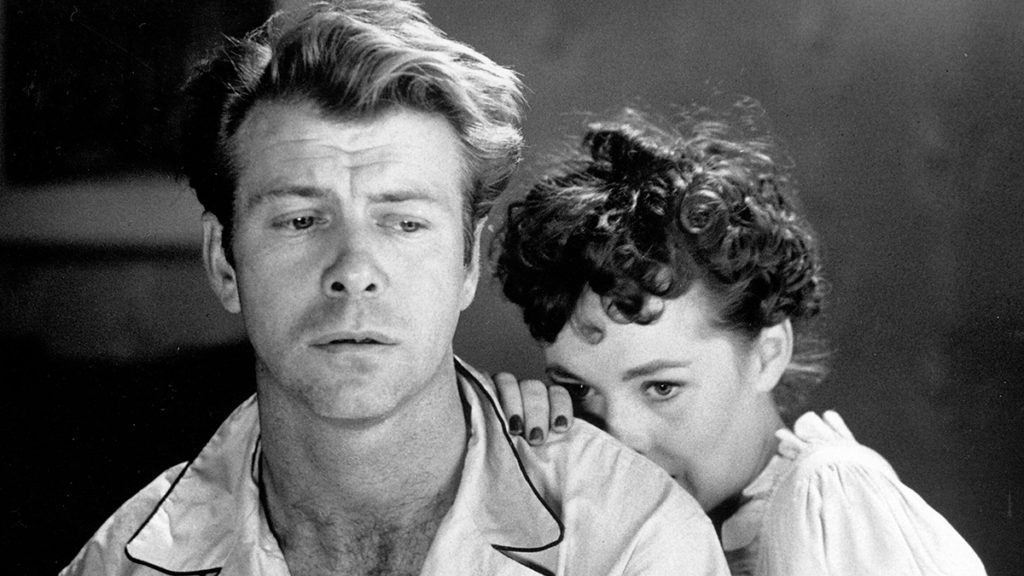
Wednesday, September 6 @ 7:30 PM / NEIU
CRIME WAVE
Directed by Andre de Toth • 1954
“Once you’ve done a bit, nobody leaves you alone. Somebody’s always on your back.” The phone never stops ringing in Crime Wave, a knotty and concise film noir set in Los Angeles. This masterfully executed B-movie was one of four films released in 1954 directed by the indefatigable, mysterious, and eventually one-eyed Hungarian immigrant Andre de Toth. De Toth had an almost preternatural ability to tackle any task presented to him, adeptly working all sorts of odd jobs in the industry, even taking on House of Wax, one of Hollywood’s most successful 3D features. However, the self-proclaimed cowboy primarily directed westerns, making six movies between 1952 and 1954 starring tough guy Randolph Scott. During this artistically robust period came Crime Wave, based on the short story “Criminal’s Mark” written by brothers John Hawkins and Ward Hawkins and published in the Saturday Evening Post in 1950. The gorgeously shot and lit action moves quickly: a trio of escaped prisoners catch further police attention after a hold-up at a gas station, dragging a reformed ex-con (Gene Nelson) back into the muck. An unsentimental LAPD detective (an icy Sterling Hayden) marks him as a person of interest, never letting go of his conviction that the ex-con must be involved. And then things get worse. A young Charles Bronson appears, comfortably radiating swagger and presence. It is a film propelled by interruption: phone calls, knocks on the door, radio dispatches, the inescapable past. Restored by the Library of Congress in collaboration with Warner Media and The Film Foundation. (RIN)
73 min • Warner Bros. • 35mm from Library of Congress, permission Swank
Preceded by: “By Word of Mouse” (Friz Freleng, 1954) – 7 min – 35mm
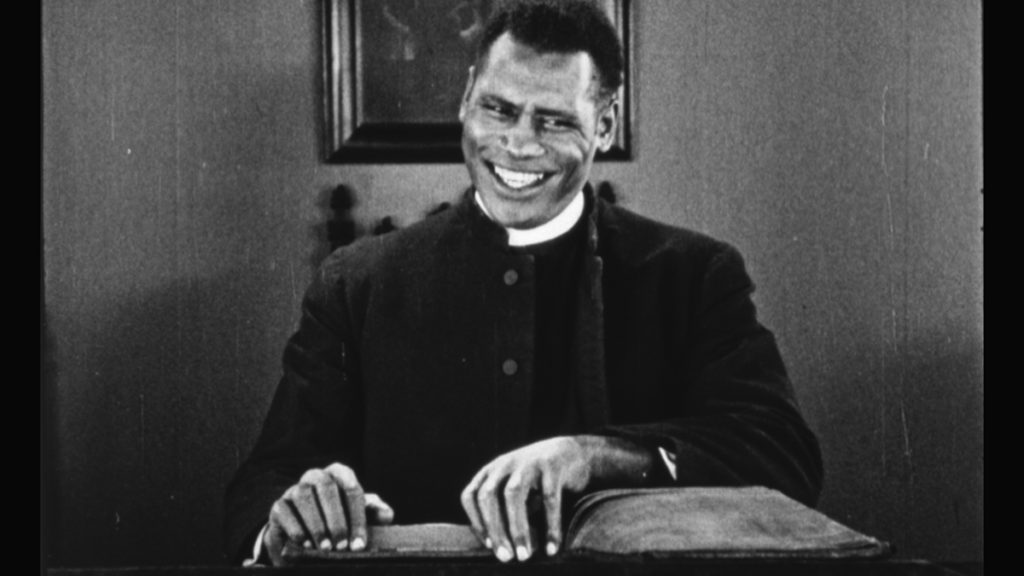
Tuesday, September 12 @ 7:00 PM / Music Box Theatre
BODY AND SOUL
Directed by Oscar Micheaux • 1925
In 1924 Paul Robeson electrified Broadway with his performance in Eugene O’Neill’s All God’s Chillun Got Wings, which soon led to the starring role in a revival of O’Neill’s The Emperor Jones. Hollywood scarcely noticed Robeson, leaving self-made race film impresario Oscar Micheaux to swoop him up for $100 a week for what would become Robeson’s film debut, Body and Soul. Robeson stars in a dual role, playing both Isiaah T. Jenkins, a hardened criminal posing as a preacher, and Sylvester Jenkins, his kindly twin brother who devotes his time to inventions and patent applications. Young Isabelle (Julia Theresa Russell) is in love with Sylvester, but her mother Sister Martha Jane (Mercedes Gilbert) has been beguiled by the preacher and pushes him towards her daughter, ignoring all warning signs of his vociferous appetites. With a long, comical sequence of a drunken Robeson delivering an endless sermon (“Dry bones – in the valley!”), Body and Soul pushed Micheaux’s innate anticlerical tendencies to the breaking point, with censors in many jurisdictions demanding extensive cuts. Miraculously, Body and Soul is one of three Micheaux silent features (out of twenty-six) to survive today, and the only one that comes down to us in reasonably authentic form, retaining the original color tints and the dialect-heavy intertitles. Preserved by the George Eastman Museum with funding from Anthology Film Archives. (KW)
93 min • Micheaux Film Corporation • 35mm from George Eastman Museum
An original film score will be performed live by the Alvin Cobb, Jr. Trio, a group led by drummer/composer Alvin Cobb, Jr. and featuring bassist/vocalist Katie Ernst and pianist Julius Tucker.
Preceded by: “Something Good – Negro Kiss” (1898) – 29 sec – 35mm
Produced to capitalize on the popularity of Edison’s “The Kiss” (1896), “Something Good – Negro Kiss” was made by Chicago’s Selig Polyscope with vaudevillians Saint Suttle and Gertie Brown. In its relaxed intimacy, the imitation surpasses the (frankly grotesque) John C. Rice-May Irwin original. Recently rediscovered and preserved from a 19th century nitrate print salvaged from an estate sale, “Something Good” is the earliest extant screen depiction of Black love and a beacon of early cinema free from stereotypes. Courtesy of University of Southern California HMH Foundation Moving Image Archive
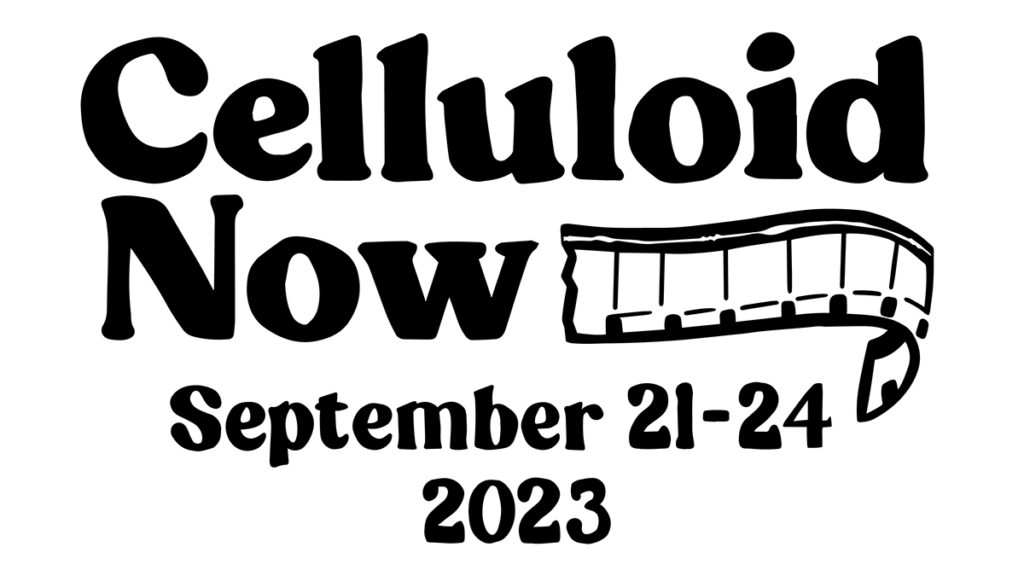
September 21 – 24
CELLULOID NOW
The Chicago Film Society is proud to present Celluloid Now: four days of screenings, workshops, and other events showcasing the work of analog filmmakers and artists, alongside archival rediscoveries and restorations.
Screenings will be held across 3 venues
Gene Siskel Film Center – Constellation – Chicago Cultural Center
visit celluloidnow.org for more information
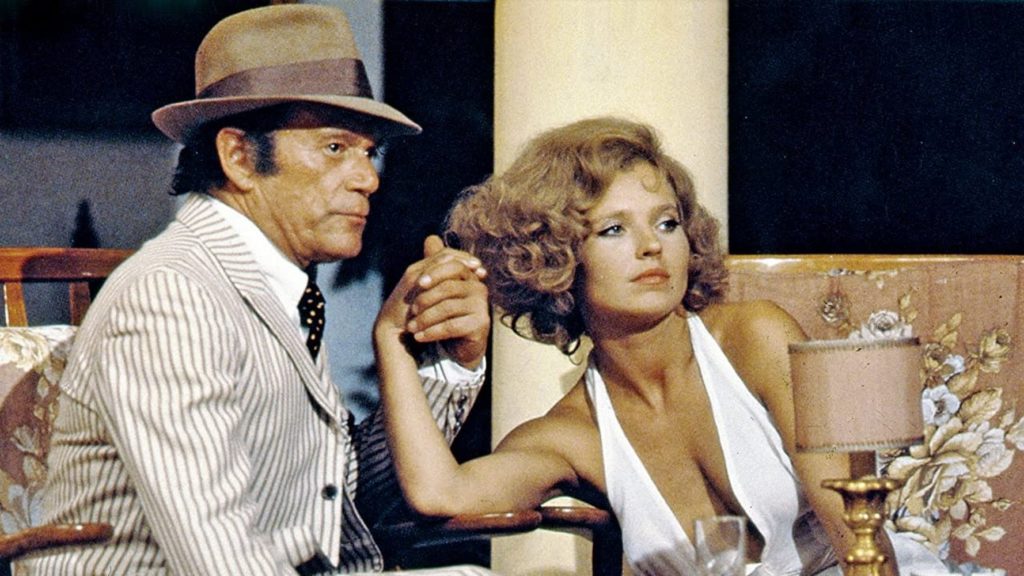
Wednesday, September 27 @ 7:30 PM / NEIU
BEWARE OF A HOLY WHORE
Directed by Rainer Werner Fassbinder • 1970
In German with English subtitles
“Do some work, you lazy bitch!” Based on the real-life troubled production of his film Whity, Beware of a Holy Whore stars Fassbinder and his usual band of collaborators as an international motley crew of selfish (yet fashionable!) whiners and sex pests, lazing around a Spanish seaside villa as the filming of their movie gets repeatedly derailed by a tyrannical director and various financial mishaps. Emotional cruelty, pettiness, incessant name-calling, and acerbic one-liners abound in the hangout movie from hell, where casual hookups and daytime drinking seem about as pleasurable as a root canal and a soundtrack of Leonard Cohen ballads does little to soften the blows. Holy Whore suggests that Fassbinder’s impressive output of films is nothing short of miraculous, because not only is making underground, conceptually rigorous art with your weirdo friends difficult, and likely to unleash monstrous behavior from everyone involved, but there’s a high probability that your cast and crew might eat each other alive before anything is actually finished. But when you’re someone who cannot, under any circumstances, stop making art, at least these hellish experiences can serve as hilarious and psychotic fodder for future films. Starring Lou Castel, and Fassbinder stalwarts like Hanna Schygulla, Ulli Lommel, and Kurt Raab, plus French icon Eddie Constantine as himself. (RL)
104 min • Antiteater-X-Film • 35mm from Janus Films
Preceded by: German safety commercials – ~5 min – 35mm from Chicago Film Society Collections
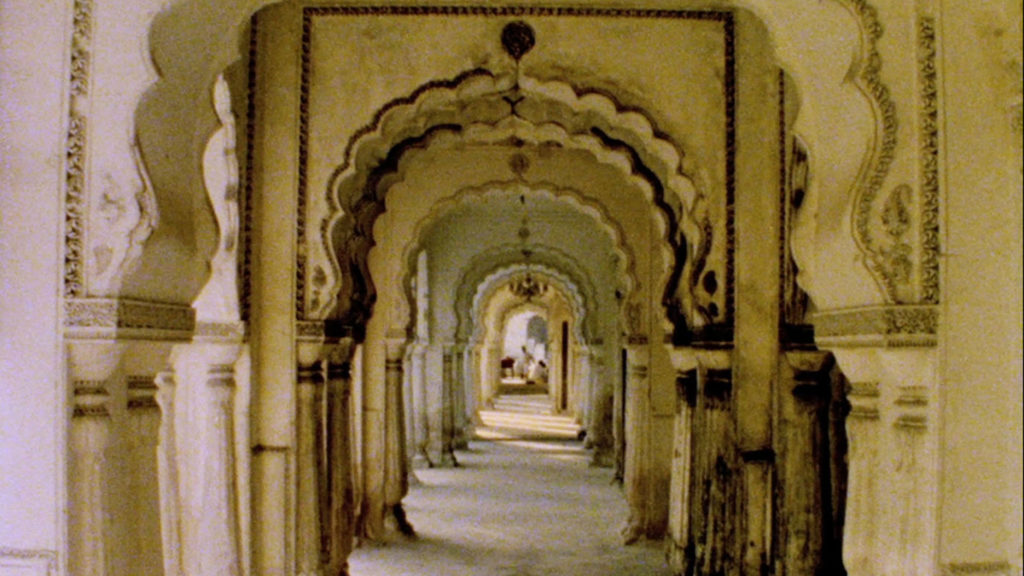
Friday, September 29 @ 5:00 PM, 6:00 PM, 7:00 PM / Chicago Cultural Center
THREE FILMS BY GAUTAM VALLURI
Over the past few years, filmmaker Gautam Valluri has produced a small oeuvre of experimental 16mm films exploring the tombs, courts, and mosques of Hyderabad, the city where he grew up. With their abruptly shifting soundscapes and destabilizing optical printer work, the three films in this program present these palatial wonders as protagonists in their own centuries-running psychodramas, preserved by the whims of history to loom monolithic over the present. Now residing in France, Valluri is a member of the Paris-based artist film lab L’Abominable, where much of the printing work for these films was accomplished. This program features the following shorts, all screening in Chicago for the first time in 16mm: Midnight Orange (2018, 11 min.), Durbaar (2019, 9 min.), and ul-Umra (2022, 8 min.).
Approx. 30 min. • 16mm from Gautam Valluri
This program is FREE and will screen three times at the Chicago Cultural Center in the Claudia Cassidy Theater (2nd floor) as part of the Chicago Cultural Center Open House and the World Music Festival Ragamala Mash Up.

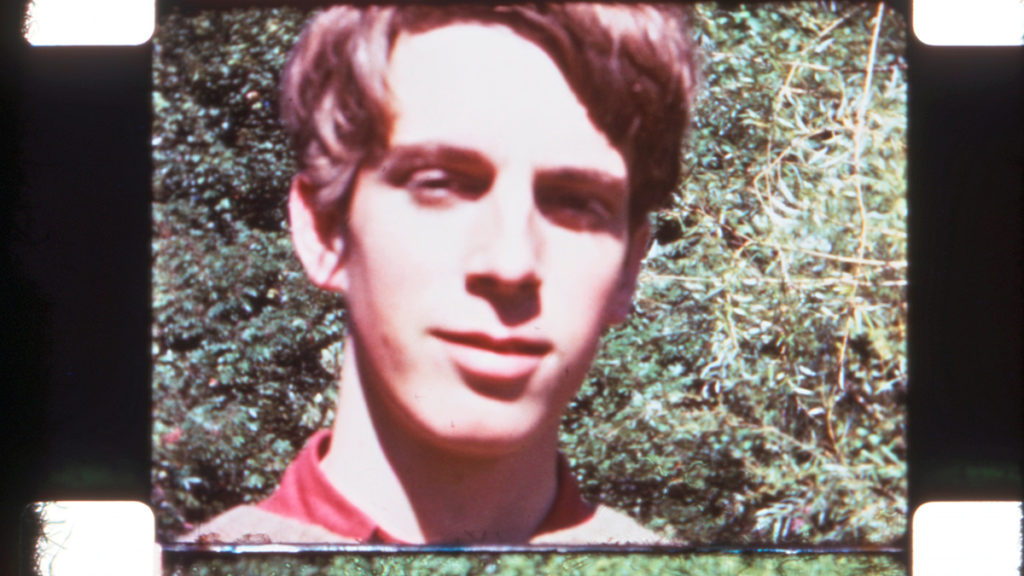
Friday, October 6 @ 7:00 PM / Film Studies Center
FIVE FILMS BY FRED CAMPER
1967 – 1969
Filmmaker In person! Introduction and discussion with Fred Camper
Fred Camper’s incisive film reviews ran in the Chicago Reader from 1986 through 2010, but long before he was a celebrated critic he was a young cineaste absorbing ideas and images he glimpsed while programming 16mm screenings at the MIT Film Society. Soon he turned to making films himself. Armed with a few rolls of Ektachrome and the crudest technical equipment, Camper turned his Cambridge rooming house into an expansive cinematic constellation, finding infinite reward in a patch of peeling paint in the bathroom or the leaves outside his window. Drawing equally from Stan Brakhage and Howard Hawks, Gregory Markopolous and Douglas Sirk, Camper’s films are omnivorous explorations of the everyday. Camper’s five 16mm shorts represent a unique synthesis of his seemingly disparate influences, often locating an aesthetic epiphany in a forgotten work of Hollywood cinema and extrapolating a rigorous and suggestive way of seeing that can be applied to non-narrative ends. (KW)
All films preserved by Chicago Film Society. Dan Potter and Bathroom preserved with the support of the National Film Preservation Foundation. Welcome to Come and A Sense of the Past preserved through the NFPF’s Avant-Garde Masters Grant Program and the Film Foundation; funding provided by the Hobson/Lucas Family Foundation.
- Joan Goes to Misery (1967) – 8 min – 16mm
- A Sense of the Past (1967) – 4 min – 16mm
- Dan Potter (1968) – 39 min – 16mm
- Welcome to Come (1968) – 3 min – 16mm
- Bathroom (1969) – 25 min – 16mm
Total Runtime: 85 min
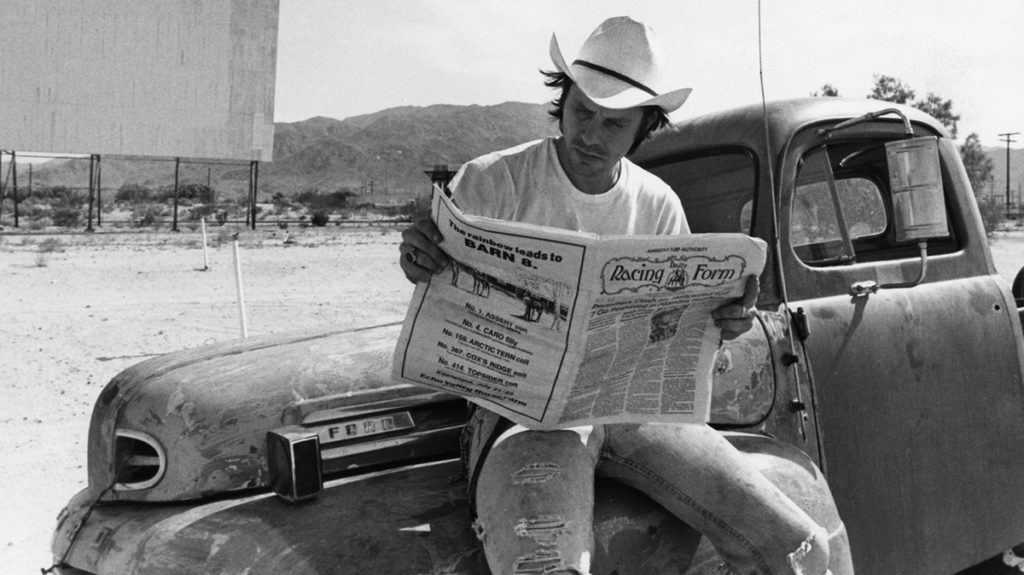
Wednesday, October 11 @ 7:30 PM / NEIU
BORDER RADIO
Directed by Allison Anders, Dean Lent, and Kurt Voss • 1987
The feature film debut of Allison Anders (an underappreciated director of ’90s feminist indies like Gas Food Lodging and Mi Vida Loca), Border Radio is a micro-budget crime film made and set during the waning days of the ’80s post-punk scene in Los Angeles. Anders and her co-directors Kurt Voss and Dean Lent were still in grad school at UCLA when they began what they thought would be an art school neo-noir and ended up becoming an ode to a crumbling music scene. Co-director Voss described the production’s DIY spirit as they struggled for four years to complete the film: “We perform the editing by walking the reels into the UCLA editing bays through a side door every night past 11 p.m. Allison’s kids kip down in sleeping bags under the editing table and we work until dawn.” Echoing the real-life production, Border Radio is a family affair, starring Anders’s sister Luanna as a rock-journalist and single mother searching for her missing husband (Chris D. of the Flesh Eaters) who’s hightailed it to Mexico after an ill-conceived robbery. Luanna grapples with lecherous drunks, childlike men, and unreliable babysitters on a search that has the hazy directionless vibes of Stranger Than Paradise with a dash of Candy Mountain. John Doe of legendary LA band X co-stars as Chris D.’s partner in crime. Doe, a melancholy rock star Adonis, would go on to have a prolific side career as a respected character actor. Featuring stunning Wenders-inspired black-and-white 16mm cinematography by Dean Lent. (RL)
87 min • Coyote Productions • 35mm from Chicago Film Society Collections, permission Janus Films
Preceded by: ’80s Indie trailer reel – ~10 min – 35mm
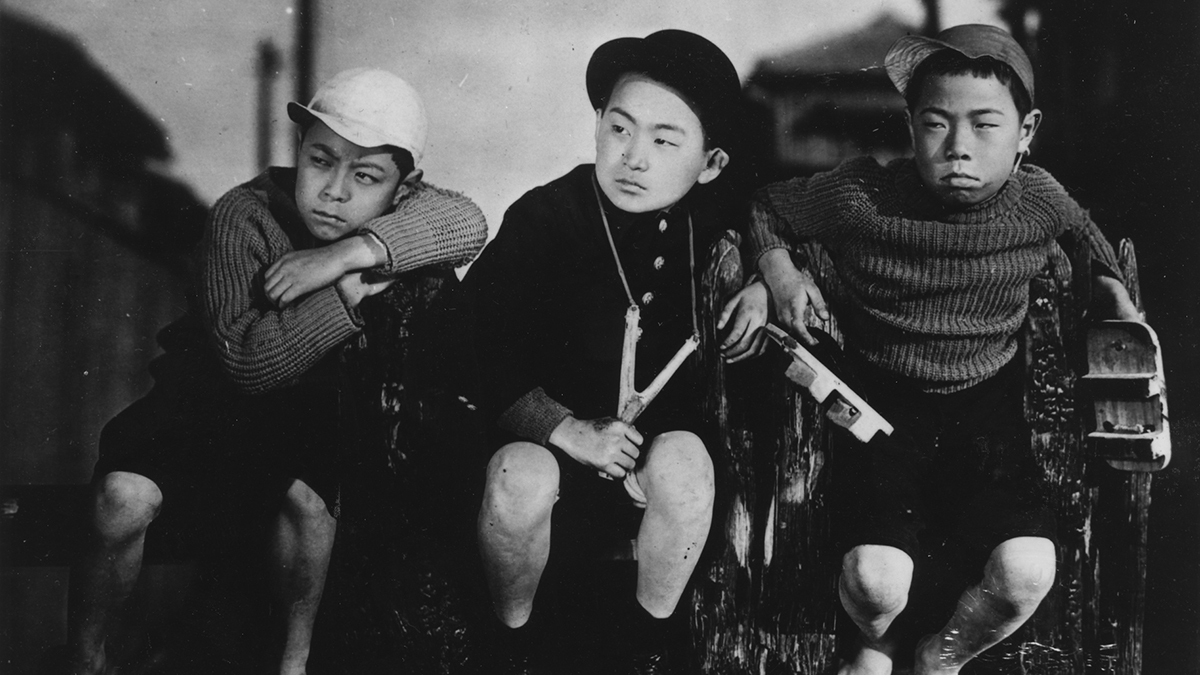
Monday, October 16 @ 7:00 PM / Music Box Theatre
I WAS BORN BUT …
Directed by Yasujirō Ozu • 1932
Among the most celebrated of all Japanese film directors, Yasujirō Ozu began his studio career in 1923 at the Shochiku Film Company and would remain employed there until his death 40 years later. As the only major film studio operating in Tokyo following the Kantō earthquake of 1923, Shochiku was uniquely positioned to produce films tackling urban life in modern Japan. Inspired by the work of Charlie Chaplin and Ernst Lubitsch, Ozu would quickly blossom into one of the company’s signature talents, tackling contemporary subject matter with a quietly thorny comedic sensibility. The most popular and enduring of Ozu’s silent films, I Was Born, But… follows Ryoichi and Keiji Yoshi, a pair of schoolboys recently relocated to the suburbs of Tokyo, where they’re forced to suffer the wrath of local bullies and assaults on their salary-man father’s dignity. I Was Born, But… would set the stage for Ozu’s subsequent career as the great chronicler of 20th century Japanese family life and prove to be the director’s major breakthrough with film critics, named the best release of 1932 by film magazine Kinema Junpo and later appearing on their list of the greatest Japanese films of all time. (CW)
90 min • Shochiku Film Group • 35mm from Janus Films
Live musical accompaniment by MIYUMI Project Japanese Experimental Ensemble
Preceded by a very special short subject recently preserved by CFS!
“Doll Messengers of Friendship” (1927) – 9 min – 35mm
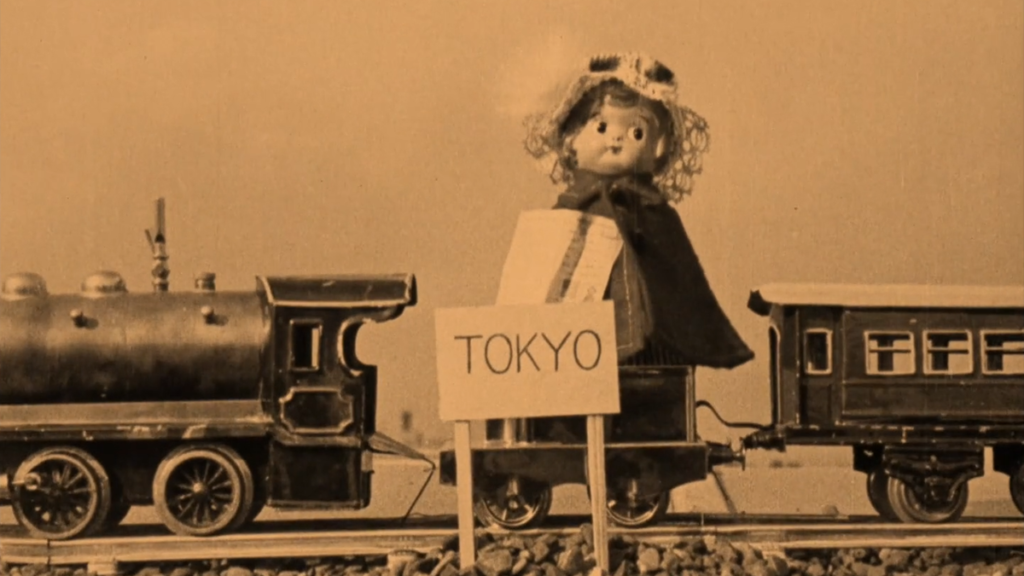
Against a backdrop of mounting xenophobia in the US, Rev. Sidney Gulick embarked on an unconventional act of private diplomacy to reset his country’s rocky relationship with Japan: a doll exchange between the countries’ schoolchildren. Industrialist Eiichi Shibusawa oversaw the Japanese response, welcoming the American dolls and reciprocating with a beautiful contingent of dolls for the US. Though Gulick and Shibusawa’s approach was cute and cuddly, the underlying plea for reconciliation was deadly serious—and tragically short-lived. This neglected episode in East-West relations is commemorated in the short film “Doll Messengers of Friendship.” Never released theatrically, “Doll Messengers” was made to be shown as a motion picture adjunct to the Japanese dolls’ tour of the US. This surviving fragment has been preserved from a 35mm tinted diacetate print, the only extant copy of the film. Preserved by Chicago Film Society with the support of the National Film Preservation Foundation. (KW)
☆ TECHNICOLOR TERROR! PRE-CODE DOUBLE FEATURE!☆
$13 Double Feature Admission
Tuesday, October 24 @ 7:30 PM / Music Box Theatre
Co-presented by Music Box of Horrors
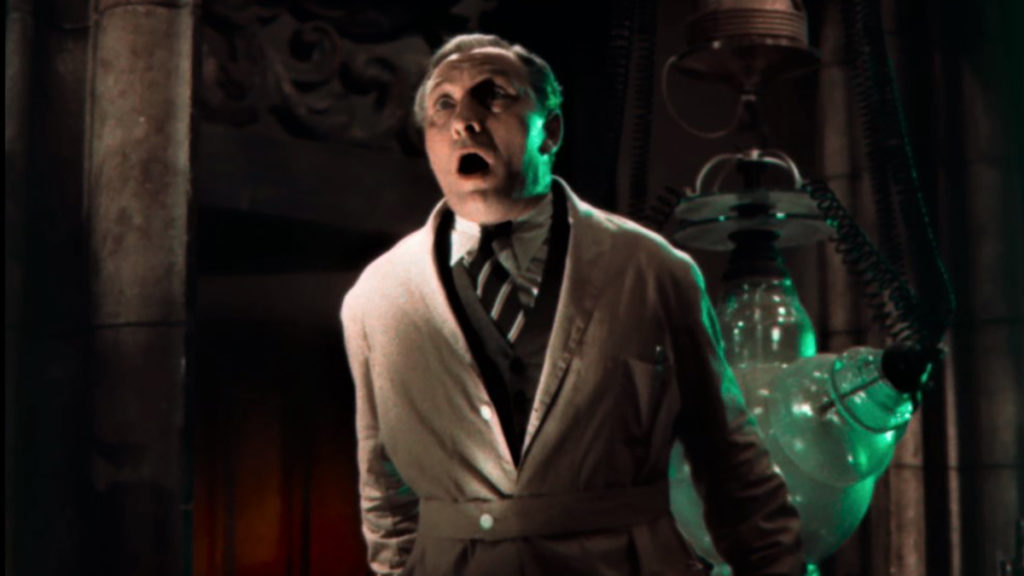
DOCTOR X
Directed by Michael Curtiz • 1932
From the illustrious career of Michael Curtiz, the Hungarian-American film director renowned for titles such as Mildred Pierce, White Christmas, and Casablanca, comes a gripping pre-Code horror mystery. The first horror film shot in color and starring the first-ever scream queen, Fay Wray, Doctor X follows reporter Lee Taylor (Lee Tracy) on the beat with the Daily World News as he attempts to unmask the face behind the gruesome Moon Killer murders plaguing New York City with every full moon. The police call on Dr. Xavier (Lionel Atwill), seeking his medical expertise on the deceased victims, but they soon begin to suspect that members of the medical academy team may be guilty of the Moon Killer murders themselves. Not a surprising suspicion considering the medical team is composed of oddballs such as Dr. Wells, a student of cannibalism with a missing hand; Dr. Haines, who is keeping a heart alive in a jar with electrolysis; and finally, Dr. Rowitz, who is busy connecting the pull of the moon to the behavior of man. Doctor X was one of the final films to be shot in the two-color Technicolor process, which produces an iconic palette of creamy oranges and vibrant sea greens. A black-and-white version was also shot, to the chagrin of Technicolor, and was shown in smaller cities. For many years, the Technicolor version was thought to be lost, but it was found in Jack Warner’s personal collection after his death in 1978. Obligatory viewing for any horror aficionado and especially for anyone with an affinity for the moon. Restored by the UCLA Film & Television Archive and The Film Foundation in association with Warner Bros. Entertainment. Restoration funding provided by the Hobson/Lucas Family Foundation. (TV)
76 min • Warner Bros. • 35mm from UCLA Film & Television Archive
☆Screens as a double feature with…
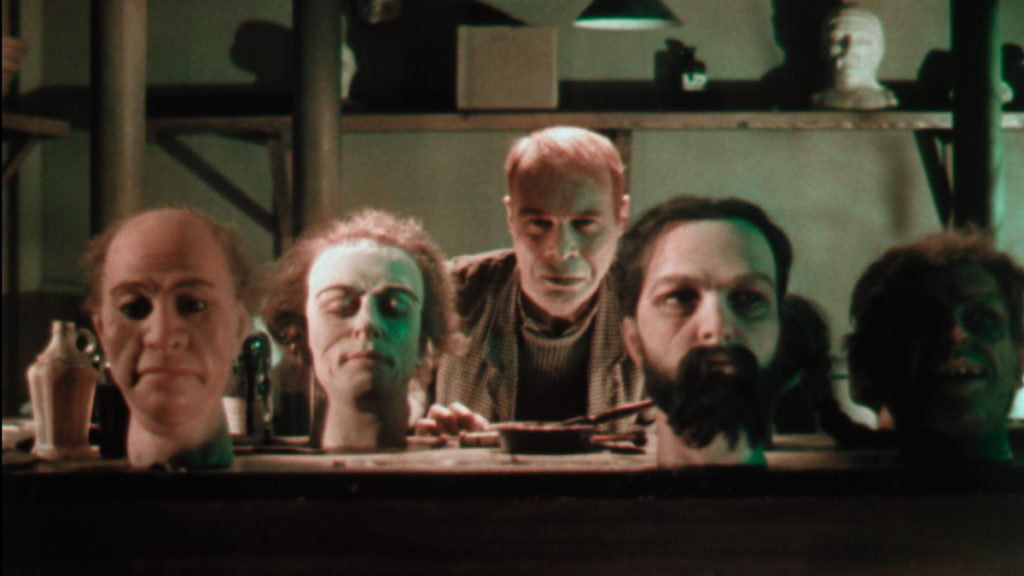
THE MYSTERY OF THE WAX MUSEUM
Directed by Michael Curtiz • 1933
Hot off the heels of Doctor X, Warner Bros. asked Curtiz to make another horror film: an eerie two-color Technicolor mystery set in a wax museum. When people begin mysteriously disappearing from the streets of New York City immediately after a master sculptor, Igor (Lionel Atwill), opens his new museum, Florence (played by the brassy Glenda Farrell), a sharp-witted reporter eager to prove her worth, is hot on the case. Her roommate Charlotte (Fay Wray) soon becomes a dangerous obsession to Igor. The identical resemblance between Charlotte and his lost Marie Antoinette sculpture drives him mad, as he hopes to claim her as a model … or his next victim. Like its sister film, Doctor X, The Mystery of the Wax Museum was thought to be lost, but it too was found in ex-studio head Jack Warner’s collection. Complete with bodies hanging from windows, monsters creeping in the morgue, wax figurines engulfed in flames, grotesque imagery, and salacious humor, this movie was among Warner Bros.’ top 5 grossing films of 1933 and is considered a unique pre-Code classic today. The Mystery of the Wax Museum was one of the last films to be shot with the two-color Technicolor process, but its unique visual influence made a lingering impact that spawned multiple remakes, including the polarized 3D remake House of Wax starring Vincent Price. Restored by the UCLA Film & Television Archive and The Film Foundation in association with Warner Bros. Entertainment. Restoration funding provided by the Hobson/Lucas Family Foundation. (TV)
77 min • Warner Bros. • 35mm from UCLA Film & Television Archive
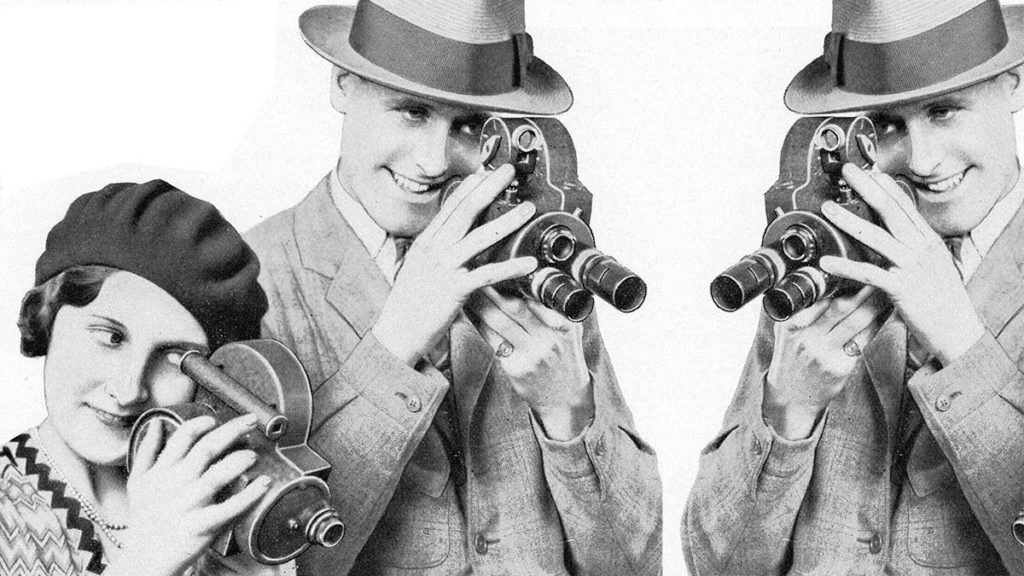
Saturday, October 28 at the Chicago History Museum, 1601 N Clark St
HOME MOVIE DAY 2023
Home Movie Day is dedicated to YOUR home movies. Drop in between 11 AM and 3 PM and archivists and projectionists will inspect and project any 16mm, 8mm, or Super 8 home movies that walk in the door.
Don’t have any films? Feel free to just sit back and enjoy the show!
Presented by Chicago Film Archives, Chicago Film Society, and the Chicago History Museum
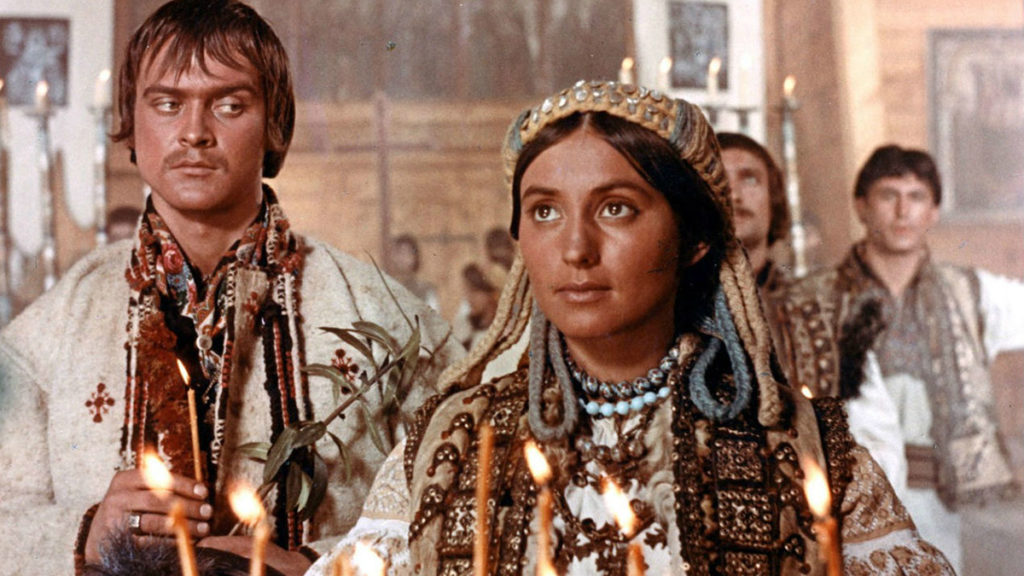
Wednesday, November 1 @ 7:30 PM / NEIU
SHADOWS OF FORGOTTEN ANCESTORS
Directed by Sergei Parajanov • 1965
In Ukrainian with English subtitles
The sound of roaring trumpets introduces the epic love story of Ivanko and Marichka, Hutsul villagers from the West Ukrainian region of the Carpathian mountains. This impressionistic and resplendent poetic drama from the uncompromising Armenian filmmaker Sergei Parajanov is a landmark of Ukrainian cinema and a zesty deviation from the artistic limitations imposed by the USSR, where socialist realism was the approved art style from 1932 to 1988. Released four years before Parajanov’s seminal, non-narrative The Color of Pomegranates, Shadows of Forgotten Ancestors is narratively-focused, though still thrillingly fantastical. It tells the sorrowful story of two lovers drawn to each other despite an act of violence committed by Marichka’s father that occurs during their childhood. Recalling the 1911 novel by Ukrainian author Mykhailo Kotsiubynsky upon which the film was based, Parajanov said, “I fell in love with this crystally-clear feel for beauty, harmony and infinity.” The film offers a kaleidoscopic approach to images and techniques, Parajanov jumping from idea to idea with gusto as an inventive and propulsive folk-inspired score from composer Myroslav Skoryk blasts in the background. The film led to international acclaim for Parajanov, although the attention he continued to receive as a filmmaker would later prove burdensome: he was sent to a Siberian labor camp in the 1970s, where he remained for four years. In a latter-day interview, Parajanov stated, “Directing is basically the truth transformed into images: sorrow, hope, love, beauty.” And what images! (RIN)
97 min • Dovzhenko Film Studios • 35mm from Kino Lorber
Preceded by: “The Roaring Road” (1964) – 10 min – 35mm
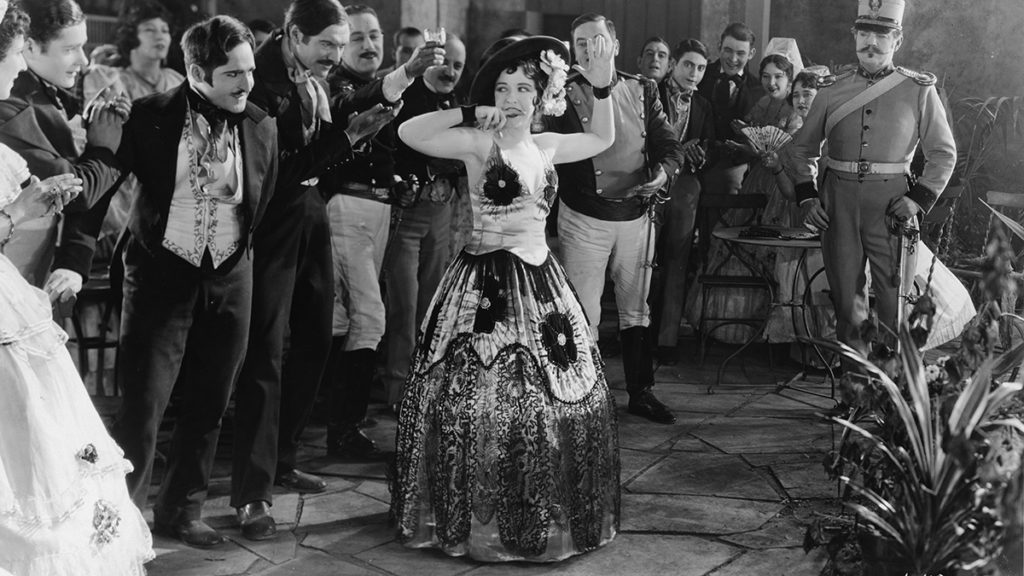
Monday, November 6 @ 7:00 PM / Music Box Theatre
THE BRIGHT SHAWL
Directed by John S. Robertson • 1923
Introduced by Rob Kozlowski, author of Becoming Nick and Nora: The Thin Man and the Films of William Powell and Myrna Loy
Richard Barthelmess had become a movie star playing bright young men and hayseed hunks, eventually forming his own production company, Inspiration Pictures, and making wholesome tall tales for American girls and boys. The company had success right out of the gate with Tol’able David, a rural drama drawn from a short story by Joseph Hergesheimer. Inspiration Pictures returned to Hergesheimer soon after, snatching up film rights to his new novel, The Bright Shawl, which yielded a more worldly period picture with Barthelmess as Charles Abbott, a rich American adventurer who gets tangled up with Cuban resistance to Spanish rule in the 1850s. Caught between Andalusian dancer La Clavel (Dorothy Gish) and Spanish loyalist spy La Pilar (Jetta Goudal), Abbott finds himself throwing in with the rebels, putting himself and the patriotic Escobar clan in grave danger. Partially shot in Cuba under the direction of John S. Robertson (best known for his memorable 1920 adaptation of Dr. Jekyll and Mr. Hyde), The Bright Shawl was received in its day as a classy offering — perhaps a little too classy. “Where [audiences] have an aversion to so-called costume plays they may class this as such and prepare themselves to be displeased although there is everything to oppose this poor judgment,” warned The Film Daily. “For an artistically inclined clientele, you have something worth while to talk about in the colorful atmosphere, excellent production and attractive settings as well as many interesting performances.” Among the interesting performances were three young actors receiving their first screen credits: Mary Astor, Edward G. Robinson, and William Powell, the latter playing a colorful Spanish villain. Restored by UCLA Film & Television Archive with funding provided by the David and Lucile Packard Foundation. (KW)
80 min • Inspiration Pictures • 35mm from UCLA Film & Television Archive
Live musical accompaniment by David Drazin
Preceded by: [Cuba (Trip to the Caribbean 1941 – Reel 3)] – 10 min – 16mm
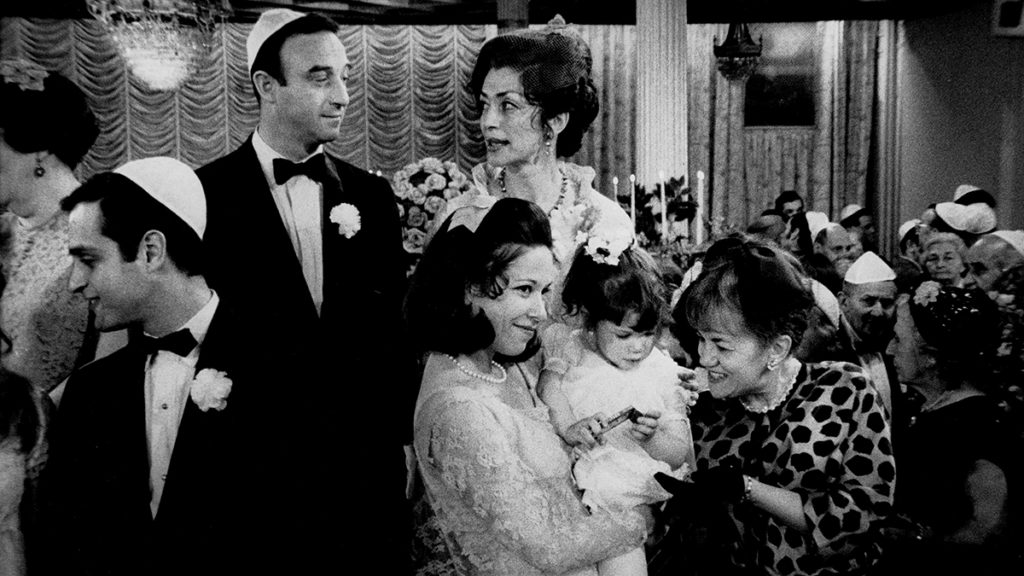
Wednesday, November 15 @ 7:30 PM / NEIU
THE PLOT AGAINST HARRY
Directed by Michael Roemer • 1969
Harry Plotnick (Martin Priest) can’t catch a break. A schlemiel goes to prison for nine months and comes out a schnook, a small-time numbers guy who can’t even reconstitute his racket because his rivals have taken over the street. Harry’s parole officer won’t let him drive a car without her permission, Harry’s goyish doctor advises against sex because of his enlarged heart, and Harry’s brother-in-law can’t even take his money to save a flagging catering business without the rabbi’s sign-off. With only a provisional foothold in the straight world, Harry embarks on his own chintzy twist on tikkun olam, handing out mink coats and charity contributions to restore his place in his family and his community. A deadpan comedy where business is conducted at a bris, a dog-training session, a golf course overlooking the expressway, and other realer-than-real shindigs, The Plot Against Harry zigzags across New York with devil-may-care abandon. After the acclaim for writer-director Michael Roemer’s first feature, Nothing But a Man, a forward-looking Seattle TV station with a production sideline offered him a blank check to make whatever he wanted. The result was The Plot Against Harry, cast mainly with white collar nonprofessionals (auditors, psychoanalysts, etc.) and loosely plotted without any conventional conflict. It’s a workaday gangland situation comedy, but it neither parodies the genre nor plumbs it for artificial thrills. Guns are never drawn once. Prospective distributors were baffled and the film had to settle for a one-week run at Seattle’s Blue Mouse Theater in 1971. King Screen Productions took a Plotnick-esque tax write-off and the film languished until 1989, when a telecine operator’s guffaws confirmed to Roemer that his obvious masterpiece was funny after all. (KW)
81 min • King Screen Productions • 35mm from The Film Desk
Preceded by: ”Goldman v. Silverman” (Josh and Benny Safdie, 2020) – 6 min – 35mm
Introduced by film critic Jonathan Rosenbaum!
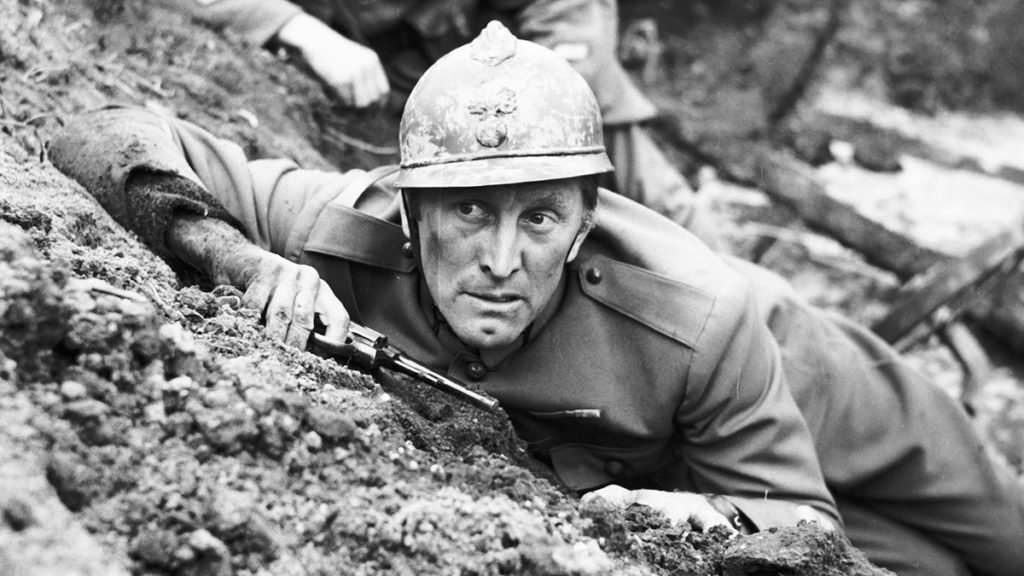
Wednesday, November 22 @ 7:30 PM / NEIU
PATHS OF GLORY
Directed by Stanley Kubrick • 1957
Fresh from The Killing, an overachieving crime thriller with a twisty chronology that played better with critics than audiences, producer James B. Harris and director Stanley Kubrick embarked upon an equally grisly and commercially dubious follow-up: an adaptation of Paths of Glory, a forgotten, out-of-print 1935 novel by Humphrey Cobb. An unrelenting portrayal of trench combat during World War I, Paths of Glory was wisely punched up with enough speechifying to attract actor-producer Kirk Douglas, who took the juicy role of Colonel Dax, a commanding officer in the French army who summons his prewar legal avocation to defend three soldiers from court martial. But the fix is in: the soldiers tried for cowardice are always a moment away from death while the generals spend their days in palatial chateaus, plotting the next move as if it were all just a game. (In a marvelous bit of casting, suave gentleman actor and recent friendly HUAC witness Adolphe Menjou plays scheming General Broulard.) What could have been a dowdy message movie about man’s inhumanity to man is dangerously enlivened by two Killing alumni with no respectable aspirations whatsoever: pulp novelist Jim Thompson mapped out early drafts of the script while character actor Timothy Carey added a note of strung-out beat nihilism to his portrayal of the doomed Private Ferol. (Carey was enough of a real-life wild man to be fired by Kubrick in the middle of the production after faking his own kidnapping.) Paths of Glory didn’t wind up with any Oscar nominations, but it did take Kubrick out of the trenches and into the Hollywood big time when Douglas summoned him to take over the troubled production of Spartacus. (KW)
88 min • United Artists • 35mm from Park Circus
Preceded by: Kirk Douglas trailer reel – 10 min – 35mm
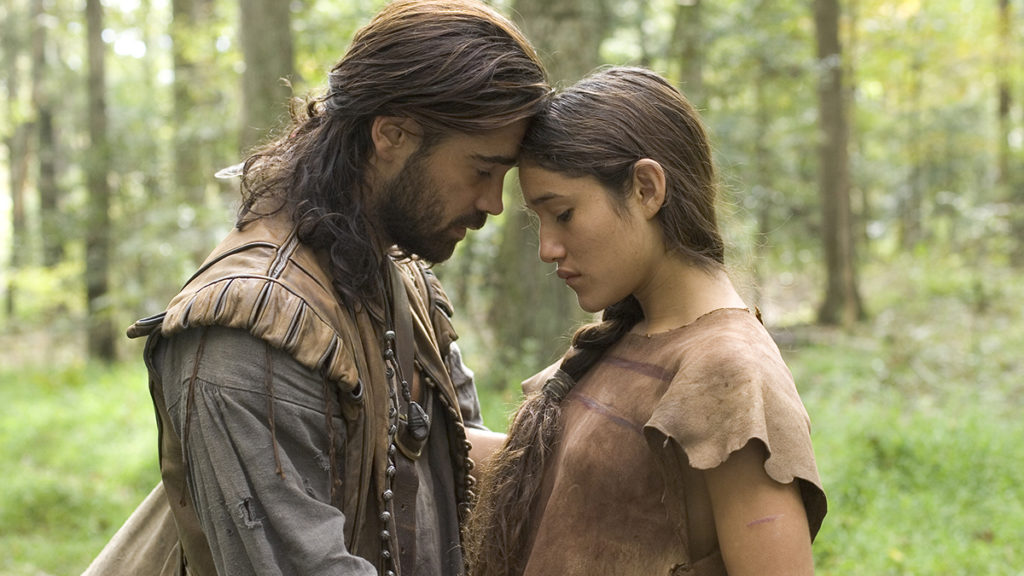
Wednesday, November 29 @ 7:00 PM / Music Box Theatre
THE NEW WORLD
Directed by Terrence Malick • 2005
Heavily disputed as actual history, English explorer John Smith’s account of being captured by the Powhatan tribe in 1608 and subsequently having his life saved by the chief’s daughter Matoaka (better known by her nickname Pocahontas) has nonetheless endured in popular yarns of American colonial history. Mostly sidestepping the rampant death and cannibalism that accompanied the actual founding of Jamestown, The New World, iconoclastic director Terrence Malick’s fourth film in as many decades, instead imagines a mythic romance between a rebellious Smith (doe-eyed beefcake Colin Farrell) and a bravely independent Matoaka (Q’orianka Kilcher, tremendous in her first major screen performance). The New World follows Matoaka through her relationship with Smith, the first Anglo-Powhatan War, her subsequent marriage to tobacco magnate John Rolfe, and, in one of the most transcendent passages in 21st century cinema, her final voyage to a new world of her own: England. Despite mucking around with narrative particulars, Malick approached The New World with a fierce dedication to verisimilitude, going so far as to write dialog for the film’s Native characters in a form of Powhatan language specially reconstructed for the film after being functionally extinct for centuries. The New World has been released in a variety of cuts, including a 135-minute wide release edit and a nearly three-hour expanded home video version. For this presentation, we will be screening Malick’s original, infrequently revived theatrical cut. (CW)
150 min • New Line Cinema • 35mm from Park Circus
Preceded by: Terrence Malick trailer reel – 8 min – 35mm
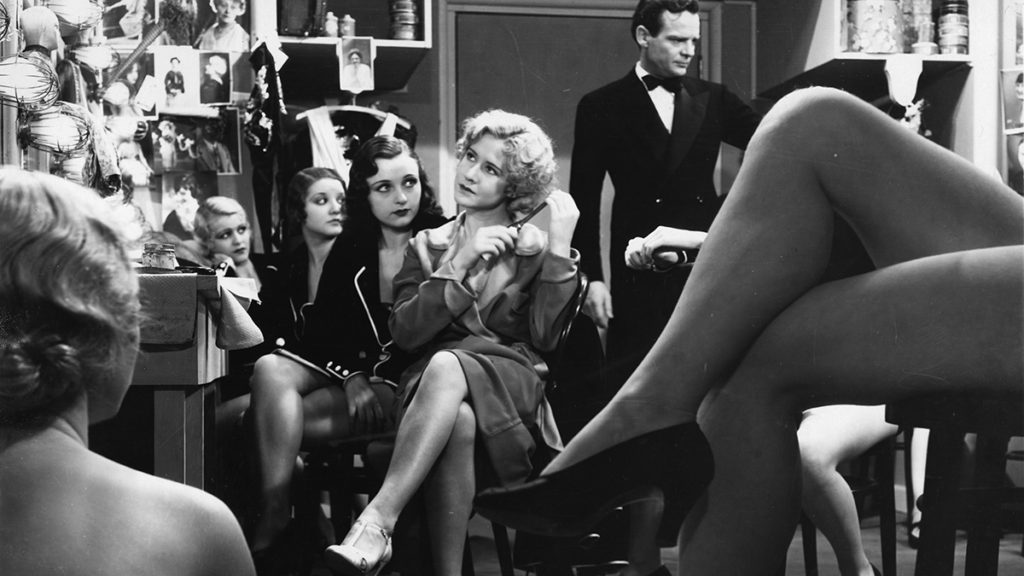
Wednesday, December 6 @ 7:30 PM / NEIU
NIGHT WORLD
Directed by Hobart Henley • 1932
Hollywood’s pre-Code era is remembered for its salaciousness, but it should also be commended for its prolificacy: studios were turning out bread-and-butter entertainments at such a clip that a substantial backlog still remains ninety years on. A case in point: Night World, a bottle of forgotten bathtub hooch that was spat out by its contemporaries but has now improbably aged into a fine wine. Cramming enough plot and character for three movies into one that can barely manage to stay upright for a full hour, Night World is a panoramic exploration of impossibly cramped quarters, an exposé of a Prohibition-era nightclub called Happy’s and its soused denizens. That the proprietor, Happy MacDonald, is played by Boris Karloff should be your first hint that names are rarely indicative of demeanor or destiny. The human kaleidoscope never stops turning: Karloff’s wife is cheating on him and setting him up for a gangland ambush; Mae Clarke is a dancer forever fighting with her mother, Hedda Hopper; Lew Ayres is a wealthy scion drinking himself to death; Clarence Muse plays the doorman who needs to get away from the club to check in on his sick wife. You might be tempted to call Night World a poor man’s Grand Hotel — but Universal’s version tumbled into theaters three months before M-G-M’s starry pacesetter. And for a film cheap enough to have practically been shot on the installment plan, Night World somehow boasts a bona fide Busby Berkeley production number a year before the young choreographer shuffled off to Burbank to make 42nd Street. (KW)
58 min • Universal Pictures • 35mm from Universal
Preceded by: “Rolling Along” (Albert Ray, 1932) – 20 min – 35mm
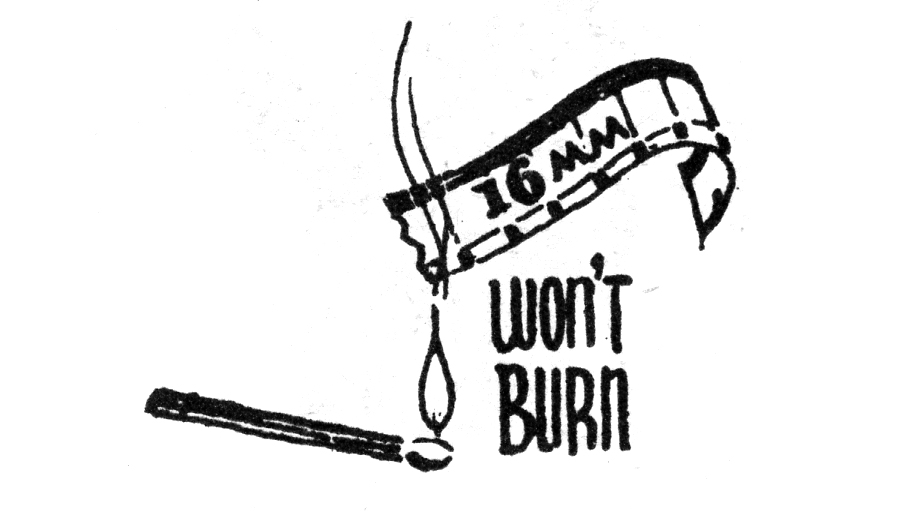
Monday, December 11 @ 7:30 PM / Music Box Theatre
16MM CENTENNIAL CELEBRATION
When motion picture film began, the 35mm gauge seemed like it could fulfill every conceivable commercial application — first the kinetoscope, allowing a single viewer to watch a short film, and then the projector, allowing vast audiences to experience feature-length films together in nickelodeons and movie theaters. Thirty-five millimeter was a professional format, and professionals didn’t flinch if their chosen medium occasionally resulted in nitrate fires. But it took 16mm film — simple, portable, nonflammable — to expand the horizons of cinema to encompass hitherto unimagined forms and new audiences. When the Eastman Kodak Company introduced 16mm and the Ciné-Kodak camera in 1923, it had a ready-made spokeswoman in Marion Gleason, a Rochester mother of four who had been fooling around with the new camera in her spare time. If she could make amateur movies, then so could anyone — even you! But whatever best-laid plans that Eastman Kodak had developed for the new film gauge, the company never could have imagined the profusion of creativity that 16mm would unleash: home movies, classroom films, avant-garde cinema, documentaries, jukebox soundies, clandestine erotica, amateur animation, student films, and more! Join us for a big celebration of our favorite little film gauge, with emblematic examples of 16mm wonder plucked from our own collection and archives across the country, including films from each decade of its first century. (KW)
• I Want a Clean Cinema (1999, 2 min)
• Projecting Motion Pictures (1951, 11 min)*
• See Yourself as Others See You (1928, 4 min)**
• The Spider and the Fly (Harry and Lillian Fulscher, 1938, 12 min)***
• Bell & Howell (Julian Antos, 2018, 5 min)
• Soundies Reel (circa 1940s, 6 min)
• Mister E (Margaret Conneely, 1960, 12 min)**
• Jamestown Baloos (Robert Breer, 1957, 6 min)
• Sears Sox (Chick Strand, Pat O’Neill, and Neon Park, 1968, 4 min)
• Permutations (John Whitney, 1968, 8 min)
Intermission
• Project Yourself (Julian Antos & Rebecca Lyon, 2021, 2.5 min)
• Sat. Night Books and Records (1975, 1 min)
• 7362 (Pat O’Neill, 1967, 10 min)
• Bondage Boy (Chris Langdon, 1973, 5 min)+
• Social Confrontation: The Battle of Michigan Ave (The Film Group, 1968, 11 min)
• Hard Core Home Movies (Greta Snider, 1989, 5 min)
• No No Nooky TV (Barbara Hammer, 1987, 12 min)+
• 33 Yo-Yo Tricks (P. White, 1976, 8 min)^
• Hey Girls (1990, 4 min)**
• 28.IV.81 (Bedouin Spark) (Christopher Harris, 2009, 3 min)
• Travel Stop (Mike Gibisser, 2018, 16 min)
• You (Heather McAdams, 1983, 3 min)***
*From the University of California, Berkeley Art Museum and Pacific Film Archive
**Provided by the Chicago Film Archives
***Preserved by the Chicago Film Society with funding from the National Film Preservation Foundation
+Preserved by the Academy Film Archive
^Preserved with the support of the Harvard Film Archive and the National Film Preservation Foundation
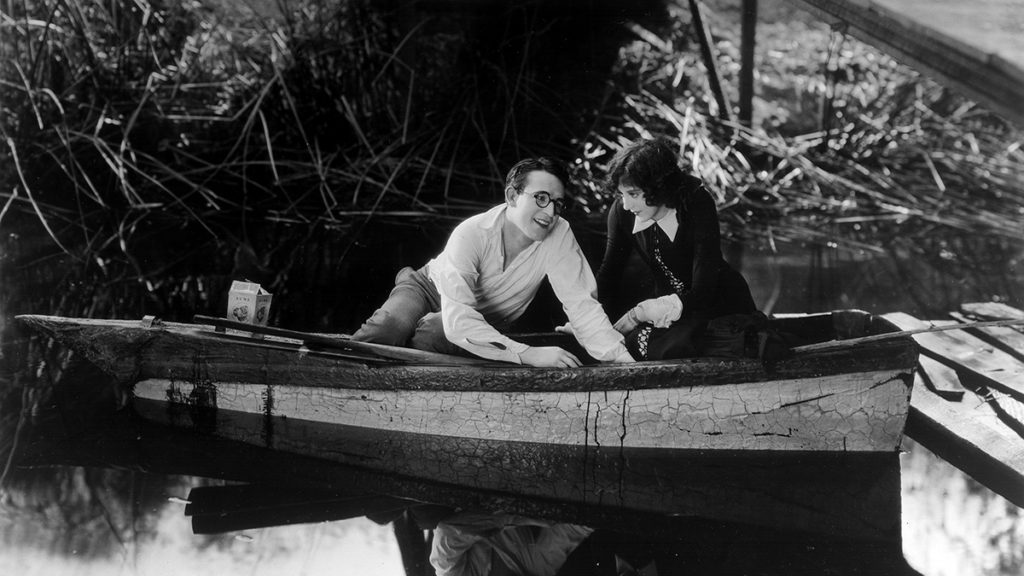
Tuesday, December 19 @ 7:00 PM / Music Box Theatre
GIRL SHY
Directed by Fred Newmeyer and Sam Taylor • 1924
By day Harold Meadows (Harold Lloyd) is a meek tailor’s apprentice at his uncle’s shop in Little Bend, blushing through every interaction with the almost-wholly female clientele. By night, Harold devotes himself to his manuscript, The Secret of Making Love, the virginal bumpkin’s portrait of the pick-up artist as a young man. When this backwoods Casanova goes to the city to find a publisher, he meets a rich girl (Jobyna Ralston) who sees the good beneath his act. But the legion of jazz baby typists in the publisher’s office ridicules Meadows’s magnetism, and the dejected boy gives up his girl to a local bigamist. That’s the windup for a climactic race to the altar, accurately described by Variety as “beyond the mere power of a typewriter to describe. It is a chase that caps anything else that has ever been done on screen.” (The Girl Shy chase was studied by the team puzzling out how to film the chariot race in Ben-Hur — which turned out well enough, but Messala is no Meadows.) The first feature made under the auspices of Lloyd’s own production company, Girl Shy was an enormous popular success in its day and remains unimpeachable entertainment a century later. (KW)
77 min • Harold Lloyd Corporation • 35mm from Harold Lloyd Entertainment
Live musical accompaniment by Jay Warren and Nicholas White
Preceded by: “The Kid Reporter” (Alfred Goulding, 1923) – 21 min – 35mm from San Francisco Silent Film Festival
Programmed and Projected by Julian Antos, Becca Hall, Rebecca Lyon, Tavi Veraldi, Kyle Westphal, and Cameron Worden.
Additional Capsules: Rocío Irizarry Nuñez
Research Associate: Mike Quintero
Heartfelt thanks to:
Shayne Pepper, Cyndi Moran, Robert Ritsema, Jose Aguinaga of Northeastern Illinois University; Brian Andreotti & Ryan Oestreich of the Music Box Theatre; David Antos; Brian Belovarac of Janus Films; James Bond of Full Aperture Systems; Eli Bush of Elara Pictures; Chris Chouinard of Park Circus; Justin Dennis of Kinora; Dino Everett of the USC School of Cinematic Arts HMH Foundation Moving Image Archive; Sarah Finklea of Harold Lloyd Entertainment; Jason Jackowski of Universal Pictures; John Klacsmann & Jed Rapfogel of Anthology Film Archives; James Layton of the Museum of Modern Art; Steven Lloyd; Edda Manriquez & Charles Rogers of the Academy Film Archive; Douglas McLaren of the University of Chicago Film Studies Center; Brian Meacham of Yale Film Archive; Jeff Milam of Ecometric Solutions; Brett Kashmere & Seth Mitter of Canyon Cinema; Kathy Rose O’Regan & Rob Byrne of San Francisco Silent Film Festival; Jake Perlin of The Film Desk; Beth Rennie of George Eastman Museum; George Schmalz of Kino Lorber; Lynanne Schweighofer & David Pierce of the Library of Congress; Jon Shibata of Berkeley Art Museum/Pacific Film Archive; Gabriel Wallace; Nancy Watrous, Olivia Babler, Justin Dean, and Mickey Gral of Chicago Film Archives; and Todd Wiener of UCLA Film & Television Archives. Particular thanks to CFS research associate Mike Quintero, CFS board members Raul Benitez, Mimi Brody, Edo Choi, Steven Lucy, Brigid Maniates, & Artemis Willis, & CFS advisory board members Brian Block, Lori Felker, and Andy Uhrich.
And extra special thanks to our audience, who make it all possible!

